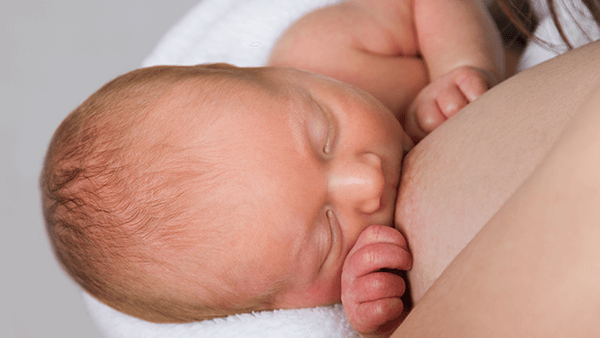The first days of breastfeeding
The breastfeeding pattern differs from child to child. Some babies sleep almost the entire first day after birth, while others want to feed straight away and often. Although your priority is not on yourself, make sure to sleep when the opportunity presents itself, eat well, and ensure that you get enough fluids.
Read time: 2 m
Verified by Ingela Ågren
Certified Midwife
Learn more about the very first breastfeeding here.
Babies usually want to feed constantly during the first day and maybe unsettled unless they are resting at the breast. The baby’s stomach is very small, only the size of a cherry, and he/she needs to feed often. Let the baby suck as often and for as long as he/she wants, as this will stimulate the mother’s milk production and align it with the baby’s needs. Most babies lose weight during the first days after birth, which is due to loss of fluids. A healthy newborn can handle this weight loss and the small amounts of breast milk available in the beginning. The baby should regain weight within a few days.
Breastfeeding can be very time-consuming in the beginning. Try to find a comfortable position, sitting or lying down. Frequent feeding increases the mother’s milk production and after three days or so, the milk volume will have increased. This is when milk stasis is common and caused by a build-up of blood and other fluids in the breast tissue. The breasts may become large, swollen, uncomfortable, and sore and the skin may turn red. Some women experience a raised temperature. The symptoms are similar to breast engorgement, but this is not the cause. Milk stasis is completely natural but feels uncomfortable and even painful. Local application of heat may be soothing or even a warm shower. The pain usually eases after a few days if the baby is allowed to feed as frequently as he/she wants.
Once the swelling eases, many women worry that milk production has been reduced or ceased altogether. However, it is the swelling of the breast tissue that has eased, and the breast milk is still there. If the breasts and nipples become too swollen for the baby to breastfeed, you may need to hand express breast milk before feeding.
Verified by Ingela Ågren
Certified Midwife
More from Preggers
Hundreds of related articles, podcasts & more waiting for you in the Preggers app.
Download Preggers today.

